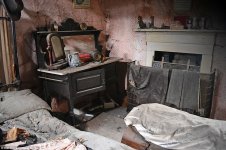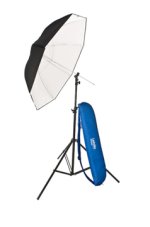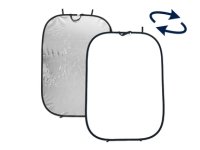Thanks for your reply
Flashes are a bit of a learning curve for me!
I thought that the camera commander could control a number of flash units but only in 2 groups, whereas the SU-800 advantage is that it can control 3 groups?
Right, I hope that is what I said?

The camera commander and the SB-700 commander can control two remote groups, A and B. On the SB-700, those two groups have to be the same flash mode (TTL or manual). You set one remote flash to be group A and the other to group B, then these correspond to the A and B in the commander menu. The flash has no other settings in this mode, all settings are in the Commander menu. You have individual control of both groups.
The SB-900 and SU-800 can control three remote groups, A, B, C. The flashes also have a builtin flash which is an additional group which is not Remote (except the SU-800 does not). We often optionally disable that internal flash (meaning, only use the commander, so that the on-camera flash does not contribute light to the scene).
Groups A, B, and C if it exists, are controlled independently, meaning, each TTL group preflash is metered independently, and power level is set accordingly, independently. The commander sets all flashes equal (as metered and delivered to the subject) by default, which is flat light, but just a starting point. The idea is that we can also compensate each group, like to set the fill light a stop or two less than the main light (we can control lighting ratio).
But if there are multiple flashes in one group (two flashes set as Group A), those all get the same command, so they are Not independent flashes (the Group is the independent entity). But if only one TTL flash per group, then the flashes are metered and controlled independently, including TTL and also your manual compensation settings. Or if a manual flash group, we can set power level for each manual group in the commander (it becomes just a trigger source then).
The advantage of the SU-800 is that has a red infrared filter on it, to block visible light (so it is not also a flash). All that command flashing normally causes the portrait subject to blink, and all we get is pictures of the blinks - almost guaranteed. FV Lock is a good work around to bypass that problem, or we could put a Nikon SG-3IR filter on the camera to block the visible light from the internal flash. The SU-800 already has that filter. Blinking is only a problem in human portraits, so no concern for inanimate stuff. The red filter does reduce the command intensity slightly, so the camera commander is a little stronger (more range) than the SU-800, unless you filter it too.
I just use the camera commander, it works fine, maybe even better now and then.
The commander system is pretty nice, makes multiple TTL flash easy (indoors), however it also has serious limitations. Less reliable in bright sun, commands cannot go through opaque objects (line of sight only, commander to flash), and it does not have the extreme range of radio triggers. System can only control 2 or 3 flashes, and sometimes we want more. Commander is incompatible with other manual flash gear, really including flash meters. Meaning, you simply cannot mix other gear into the Commander system. Nevertheless, it can be great and easy system for indoor pictures, like a couple of flashes in umbrellas for portraits or whatever. But don't get too carried away with too much investment, because as you grow and want a four light system, the Commander can't do that. Then you will want a manual flash system (and a flash meter).
But again, the commander is fantastic for a quick setup (almost automatic) two flash main and fill system.
Maybe start slow and see how it goes. The $99 Yongnuo YN565EX works well as a remote for the commander. Its continuous blinking focus assist light is an issue, but is easily covered over with a bit of tape. Two of those and a couple of umbrellas is all a D810 needs to have at it.
Seems to me, other than three remote groups, or maybe for a larger flash on-camera, the only purpose of a commander in a flash unit is to add a commander to camera models that do not have a commander. But those also do not have the FV Lock option, so they are going to discover significant problems, at least for TTL portraits. The Nikon SG-3IR filter is for the internal flash, not for hot shoe speedlights. But again, inanimate subjects don't blink.

If interested in the commander, maybe see
Using the Nikon CLS Remote Wireless Flash System
If pursued, then a few links at my sig below could be of interest.






